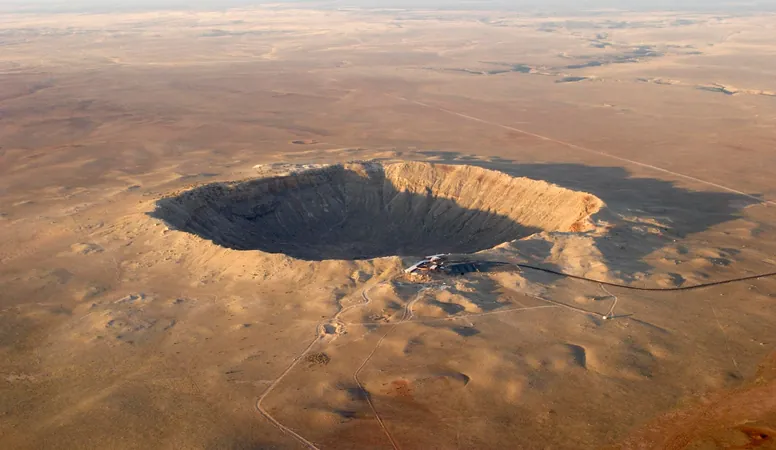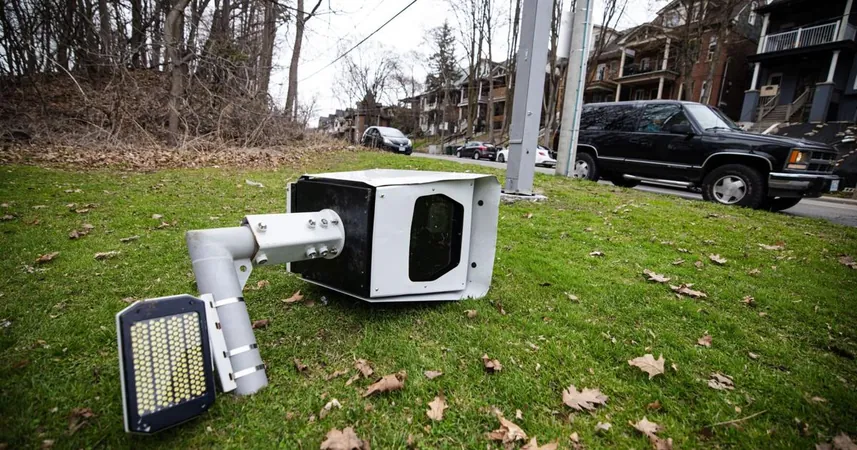
Is Humanity About to Settle on Mars? Scientists Discover Habitable Zone!
2025-06-28
Author: Olivia
Exciting Discovery on the Red Planet
A groundbreaking discovery has emerged from the Martian surface, led by a team of researchers under the guidance of planetary geologist Erica Luzzi at the University of Mississippi. They've pinpointed a tantalizing spot on Mars, in Amazonis Planitia—a massive volcanic plain—that could pave the way for human colonization! This location is believed to harbor shallow subsurface ice, a vital resource for sustaining life on the Martian landscape.
Ice Beneath the Surface: A Game-Changer for Human Exploration
Using high-resolution images from NASA’s Mars Reconnaissance Orbiter, Luzzi's team identified surface features that strongly suggest the presence of ground ice. The bright-rimmed craters, polygonal cracks, and shifts in terrain indicate that this precious water ice lies merely a meter beneath the surface—easily accessible for both robotic and human exploration without the need for heavy machinery.
As Dr. Luzzi noted, "Water is essential if we're to send humans to Mars—not just for drinking, but also for creating propellant and other crucial applications." The potential of utilizing local resources opens up new doors for sustainable exploration.
The Perfect Location: Balancing Light and Ice
While the icy polar regions of Mars are rich in water, their frigid temperatures and limited sunlight render them impractical for extended missions. Conversely, the equatorial zones are warm and sunny, but often bury ice too deeply to access easily. This makes Amazonis Planitia, situated in the planet’s mid-latitudes, an ideal compromise. Luzzi beautifully summarized this: "The mid-latitudes offer the perfect balance – abundant sunlight for energy while keeping ice close to the surface."
Towards Sustainable Martian Settlements
This discovery aligns perfectly with the strategy of in situ resource utilization (ISRU). By leveraging local materials instead of relying on costly supplies from Earth, the dream of establishing a sustainable human presence on Mars becomes much more feasible.
The Road Ahead: Further Exploration Required
However, much work remains. To gauge the actual volume and stability of the ice, follow-up missions are essential. Future explorations aim to deploy advanced radar instruments and ground drills. NASA’s SHARAD radar, along with the upcoming Mars Ice Mapper from the European Space Agency, are expected to be instrumental in this mission.









 Brasil (PT)
Brasil (PT)
 Canada (EN)
Canada (EN)
 Chile (ES)
Chile (ES)
 Česko (CS)
Česko (CS)
 대한민국 (KO)
대한민국 (KO)
 España (ES)
España (ES)
 France (FR)
France (FR)
 Hong Kong (EN)
Hong Kong (EN)
 Italia (IT)
Italia (IT)
 日本 (JA)
日本 (JA)
 Magyarország (HU)
Magyarország (HU)
 Norge (NO)
Norge (NO)
 Polska (PL)
Polska (PL)
 Schweiz (DE)
Schweiz (DE)
 Singapore (EN)
Singapore (EN)
 Sverige (SV)
Sverige (SV)
 Suomi (FI)
Suomi (FI)
 Türkiye (TR)
Türkiye (TR)
 الإمارات العربية المتحدة (AR)
الإمارات العربية المتحدة (AR)